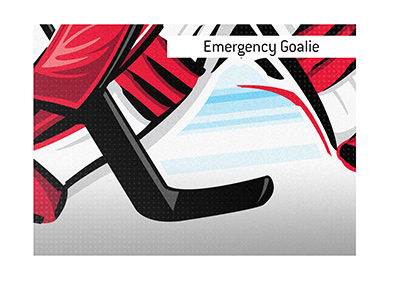Definition of Emergency Goalie
GambleAware
Please Gamble Responsibly

Recent Articles
What Was The Longest Winning Streak in NFL History?
Deacon Jones and the 173.5 Sacks the NFL Never Counted
The 2010 Chargers: The NFL's Best Team That Missed the Playoffs
Jim Brown: The Only Player to Win MVP in His First Two Seasons
Coaches Who Won Both a College Title and the Super Bowl
When the CFL Tried to Expand to the United States
Wayne Gretzky's Forgotten Lacrosse and Baseball Days
Education
Rugby Betting in the UK: Where to Bet
Best Betting Sites UK: Why I Still Choose Bet365
Sports Betting in the UK: My Review of Bet365's £30 New Customer Offer
Sports Betting Sign Up Offers - Why Bet365's £30 Bonus Still Sets the Standard
Best Horse Racing Betting Sites in the UK
How To Start Betting Online in the UK
How Do Bet365 Bet Credits Work?
Scottish Premiership Betting Guide - Odds, Markets & Match Insights
Beginner's Guide to Football Betting
Why Bet365 Is My Go-To Betting App in Ireland: Honest Review & Guide
How To Bet on the Cheltenham Festival
International Content
Cuotas de Apuestas Copa Libertadores - Dónde Apostar en Línea
Parier sur les Canadiens de Montréal
Bet365 boonuskood - minu kogemus Eesti mängijana
Bet365 Ελλάδα Κωδικός Μπόνους και προσφορά εγγραφής
Ελλάδα vs Σκωτία - Προκριματικά Παγκοσμίου Κυπέλλου Στοιχηματική Προεπισκόπηση
Article Archive
Baseball (139)
Basketball (289)
Boxing (149)
Football (915)
Golf (32)
MMA (299)
Other (783)
Soccer (2233)
Tennis (97)

 To make the story even crazier, Ayres scored the victory, as the Hurricanes defeated the Toronto Maple Leafs by a score of 6-3. The game was broadcast nationally in Canada, and Ayres became a star, appearing on late-night talk shows and morning news shows.
To make the story even crazier, Ayres scored the victory, as the Hurricanes defeated the Toronto Maple Leafs by a score of 6-3. The game was broadcast nationally in Canada, and Ayres became a star, appearing on late-night talk shows and morning news shows.